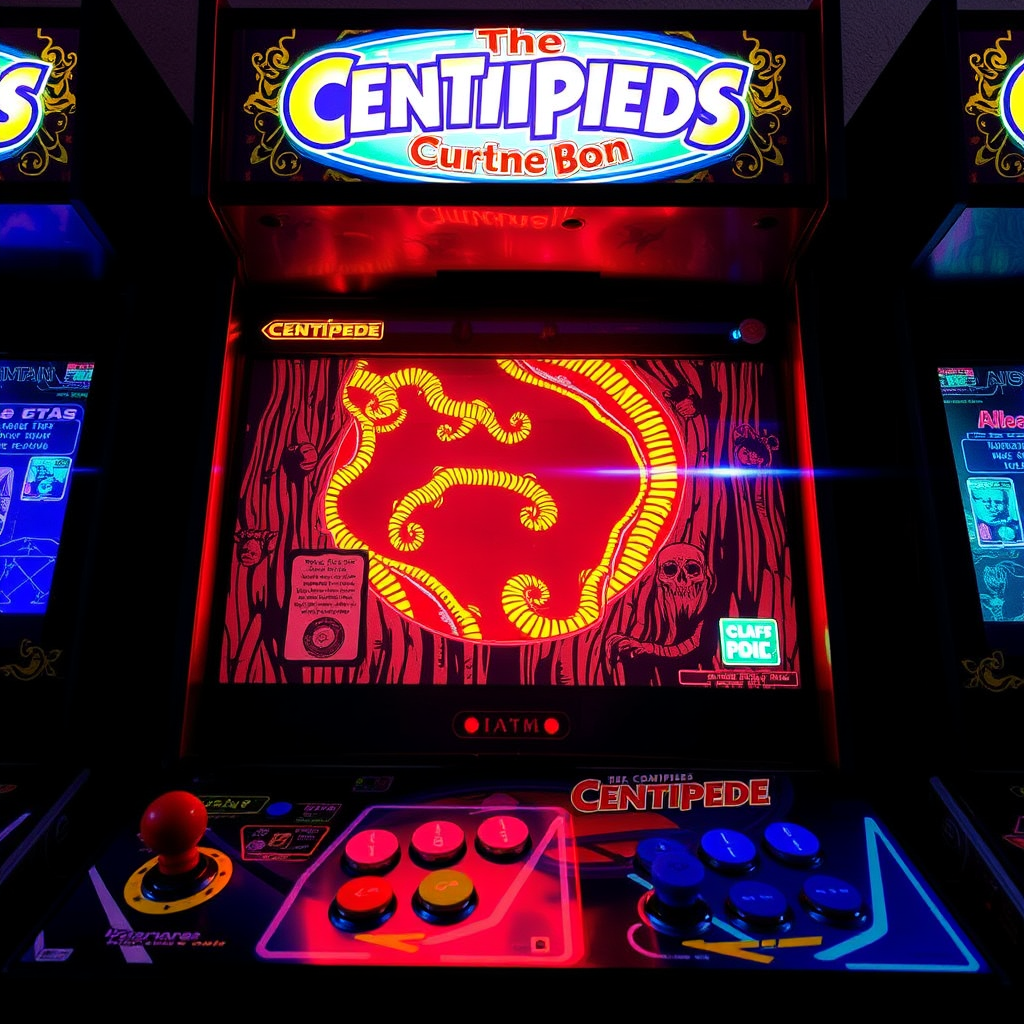
Centipede Arcade Games: The Insect-Blasting Classic
The Centipede arcade games, launched by Atari in 1981, became a staple of golden age arcades. The unique vertical shooter had players wielding a trackball controller to move their blaster horizontally, fending off descending centipedes that wound their way through a growing field of mushrooms.
What made Centipede magnetic was its mix of speed and strategy. Each segment of the centipede behaved differently after being shot, splitting into new threats. Add in spiders, fleas, and scorpions, and players found themselves adapting constantly. Its retro pixel visuals and hypnotic sound effects solidified it as a favorite in both arcades and modern compilations.
Cliff Hanger Arcade Game: Anime-Inspired Storytelling
The Cliff Hanger arcade game brought a dash of cinematic style to laserdisc arcades in the early ’80s. Using footage from Japanese Lupin III anime movies, it crafted an interactive narrative where players made split-second decisions to guide the hero through daring escapades. Quick reflexes were as important as puzzle-solving, and every scene burst with action.
While it never approached the ubiquity of Centipede, Cliff Hanger proved that arcades could be a venue for interactive storytelling, influencing later full-motion video games and experimental formats.
Why the Closest Arcade Still Matters Today
Searching for the closest arcade games isn’t just about convenience — it’s about tapping into a live, social experience. Physical arcades offer unique atmospheres: the hum of machines, competitive banter, and spontaneous friendships across a control panel.
Even in an era where you can play a coin arcade game on a console or phone, local arcades connect communities and preserve the tactile, immediate thrill of gaming without load screens or lag.
Build AI Games on Jabali
- No-code creation: Turn a simple prompt into a playable game in minutes, no coding or art background needed.
- Genre jumpstart: Launch fast with templates for maze shooters, dungeon crawlers, character sims, interactive stories and much more.
- Tweak everything: Upload assets, music, change character personalities and much more.
- Instant playtesting: One click to test, iterate, and balance! What you change is what you play.
- One-link sharing: Share a web link that works on desktop and mobile—no installs, just play.
- Creator-first: Great for solo devs, writers, educators, and studios prototyping new ideas quickly.
FAQs
Q: What made Centipede stand out?
A: Its trackball control, escalating enemy complexity, and addictive pace.
Q: Why is Cliff Hanger memorable?
A: It fused anime visuals with arcade interactivity in a unique way for its time.
Q: Why visit the nearest arcade?
A: For the social, immersive atmosphere you can’t get from home play.